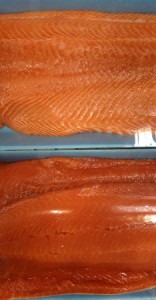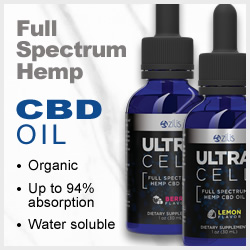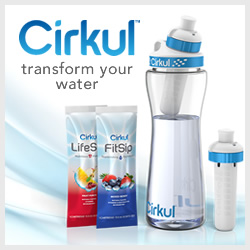 Ever notice that the food warning labels seem to only apply to pregnant women, infants, and children? I am talking about the labels produced by the EPA or the USDA. In today’s world of equal-ness, I feel left out. I mean just because I am an adult male not planning to become pregnant. It should still be important for me to be counted in when being warned about a foods toxicity. Right? With this kind of view then, a little arsenic is fine to eat every so often, just keep it away from the kids and pregnant women!
Ever notice that the food warning labels seem to only apply to pregnant women, infants, and children? I am talking about the labels produced by the EPA or the USDA. In today’s world of equal-ness, I feel left out. I mean just because I am an adult male not planning to become pregnant. It should still be important for me to be counted in when being warned about a foods toxicity. Right? With this kind of view then, a little arsenic is fine to eat every so often, just keep it away from the kids and pregnant women!
Crazy!!!
One thing I have seen in the years of being a Nutritional Consultant is that all people are affected by toxins, no matter the sex, age, or size. We all eat, breathe, and sleep. Yes, some people are more sensitive to toxins than others, but regardless, everyone is affected. What I also see often is that people store toxins and years later issues start to develop, so why not just keep the toxins out in the first place?!
Salmon Not What it Seems
I am sure you’re saying to yourself “What?! I thought Salmon was a great fish to eat!” Well it still is, so long as when you purchase it you are aware of some things. Salmon is a fast growing fish with a short life span living in cleaner areas, which reduces the amount of toxins that can be absorbed and stored in its meat. It is important to be very picky here, since most of the “wild” salmon is actually spawned and raised half of their lives in hatcheries. I hope that does not shock you too much, only about 20% of the “wild” salmon is truly wild. Sadly, before the salmon is released it is raised in farmed fish conditions, absorbing toxins and anti-biotics. As the salmon grows in the wild it does work some of these toxins out, but not all.
 This is still better than farmed salmon. Look for “Alaskan or Pacific, Wild Caught Salmon”and choose Chinook or Sockeye. If you see Atlantic/Washington/Oregon/Californian salmon it stands a very good chance of being farmed. Farmed Salmon has issues with anti-biotic feed and toxicity, not to mention being fed things fish would never find in the wild. Look at this picture and see if you can tell the wild salmon from the farmed salmon. Hint: the bottom one is wild caught.
This is still better than farmed salmon. Look for “Alaskan or Pacific, Wild Caught Salmon”and choose Chinook or Sockeye. If you see Atlantic/Washington/Oregon/Californian salmon it stands a very good chance of being farmed. Farmed Salmon has issues with anti-biotic feed and toxicity, not to mention being fed things fish would never find in the wild. Look at this picture and see if you can tell the wild salmon from the farmed salmon. Hint: the bottom one is wild caught.
Here is the catch! Get your salmon in season. Why is that important, you ask? In the off season most salmon comes from fisheries, even the wild caught is kept in the fisheries during this time and fed anti-biotic laced feed. Currently there is no labeling requirement for salmon that is trapped and kept for a short time in fisheries. About the only way to tell the difference is by price. Another important note is that farmed salmon does not can well, so canned salmon is usually the wild type. Cheap salmon is always from a fish farm.
Tuna Mercury Storage
Wow! Most all tuna is contaminated with some level of mercury. Tuna is a long living fish and mercury builds up in its tissue overtime. One client of mine ate canned tuna very often because of its high protein level, not to mention it was quick and easy as a snack or meal. When his toxicity test results came back his level of mercury was off the chart. Now keep in mind this man did not eat junk food, and was doing good eating a balanced menu. The sad thing is that this is not uncommon to find. Mercury toxicity can result in digestive tract issues, memory loss, insomnia, neuromuscular issues, emotional changes, and brain damage. As you can see, mercury toxicity should not be taken lightly. The good news is that mercury can be removed from the body.
Ever wonder where all this mercury comes from? It is estimated that 40 tons of mercury are released into the air every year in the US. Most comes from coal-burning power plants. And you’ve been told that CO2 was an issue! Come on! Rain then brings this air riding mercury back to earth where it ends up in the oceans and soils. Mercury toxicity is an issue in the US and about 10% of the population currently has mercury levels above currently recommended safe levels. Personally, I feel about any mercury in my body is above the safe zone.
Here are some of the fish that contain mercury.
HIGH – King Mackerel, Swordfish, Shark, Tuna, Grouper, Marlin, Orange Roughy, Halibut, Sea Bass, Carp, Bluefish and Freshwater Bass.
Average – Cod, Skate, Haddock, Hake, Monkfish, Snapper, Freshwater Perch, Smelt, Atlantic Tilefish, Mahi-Mahi, and Pacific Mackerel.
Safer Fish
By now you are thinking, “If I like fish, what can I eat?” Well here are some of the least toxic fish out there. Alaskan Wild Salmon, Sardines, Kipper, Trout, Pacific Flounder, Pacific Sole, Striped Bass, and Herring. If you think it is looking sad for the amount of clean fish you are right.
Cockroach of the Sea
You were looking for the third toxic fish and I had to throw this in for fun. The American Lobster is moderately high in mercury. Most scuba divers know that the cockroach of the sea is a lobster, in fact the term crustacean means “insect of the ocean.” They are bottom feeders of the ocean and will eat just about anything, even the waste or feces of other fish. Does that sound appetizing to you? I say, “Yuck!”
Shellfish
As we just looked at crustaceans, don’t forget shellfish when looking at toxic issues. While many shellfish are low in mercury they can be high in toxins. Keep in mind shellfish are bottom feeders as well, and what falls the bottom in our water systems? Usually dead fish, pollutants, and trash. It could be a reason to eat shellfish in moderation. After all, we should rotate our menu and not eat any “one” food all the time.
With some attention you can still find seafood that is clean and great for you, but you will have to invest some time to be sure of what you are buying.




Recent Comments
No comments to display